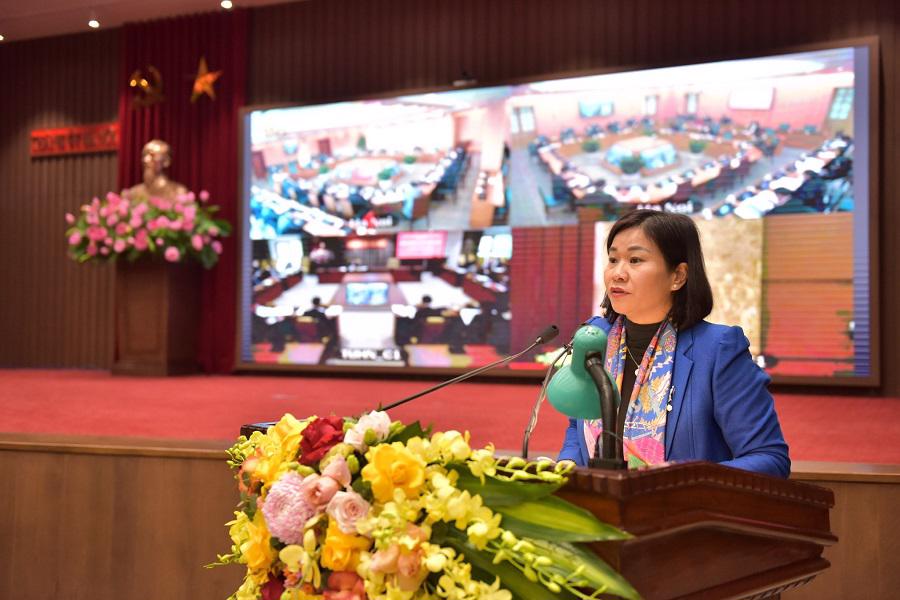Hanoi posts average GRDP growth of 6.83% in 2011-2020
The city's average GRDP is set to grow 8-8.5% for 2026-2030.
Hanoi has achieved major results in implementing Politburo’s Resolution No.11 on the development of the capital city during the 2011-2020 period.
| Vice Secretary of the Hanoi Party Committee Nguyen Thi Tuyen. Photo: Pham Hung |
Vice Secretary of the Hanoi Party Committee Nguyen Thi Tuyen gave the remarks during the seventh session of the 17th municipal Party Committee held on February 23.
According to Tuyen, the city’s socialist-oriented market economy has continued its upward trend with an average GRDP growth of 6.83% during the 2011-2020 period, or 1.15-fold higher than the national average.
As part of the economic development process, state budget revenue has been increasing year by year along with a positive shift in economic structure towards rapid and sustainable growth, Tuyen said.
In addition, a strong focus on urban planning and development helped transform the city into a greener, clean, beautiful, and modern metropolis.
Tuyen highlighted progress in ensuring social welfare and improving the people’s living standards with the poverty rate going down from 4.5% in 2010 to 0.21% in 2021.
Regarding foreign affairs, Hanoi’s status and reputation have been growing strong on the global stage, Tuyen continued.
The Vice Secretary, however, acknowledged Hanoi’s shortcomings including the lack of breakthroughs in development due to the inefficient mobilization of development resources.
“Several key objectives have not been materialized, especially the industrialization and modernization. Hanoi also needs to take better advantage of specialized policies and the Capital Law in the development process, which eventually serve as the core and growth driver for the metropolitan areas and of the country,” she said.
Making greater impacts on Vietnam’s development
In a vision for Hanoi’s development until 2030, with a vision to 2045, Tuyen expected the city’s socio-economic development plan to stay in line with that of the country, for which Hanoi should be the “focal point” of all resources and the force for the growth of the Northern region and Vietnam in overall.
For Hanoi to move forward, Tuyen stressed the necessity for local authorities to change their mindset in state governance, especially in terms of the smart city model, taking advantage of the global trend of promoting the digital economy and Industry 4.0.
In particular, the completion of the Capital Law and other specialized policies for Hanoi would be significant and lay the foundation to realize the development vision, she said.
By 2030, Hanoi is set to become a modern, green and smart city with high competitiveness in the region and of the world with an average GRDP growth of 8-8.5% for the 2026-2030 period and a GRDP per capita of US$12,000-13,000.
The city envisions high living standards with comprehensive and sustainable economic and socio-cultural development by 2045 when Hanoi would be a global city with international competitiveness and GRDP per capita of $36,000.
The municipal Party Committee sets out key tasks for the coming time, including the soon completion of the city’s planning for the 2021-2030 period, with a vision to 2050; urbanize 40% of its area; build the model of “city within a city” in the North and West, including Dong Anh, Soc Son, Me Linh; develop the Nhat Tan – Noi Bai areas into the country’s center of global integration.
Hanoi targets to complete the Ring Road No.4 and starts construction of the Ring Road No.5 before 2026; upgrade the Noi Bai International Airport and build another one.












